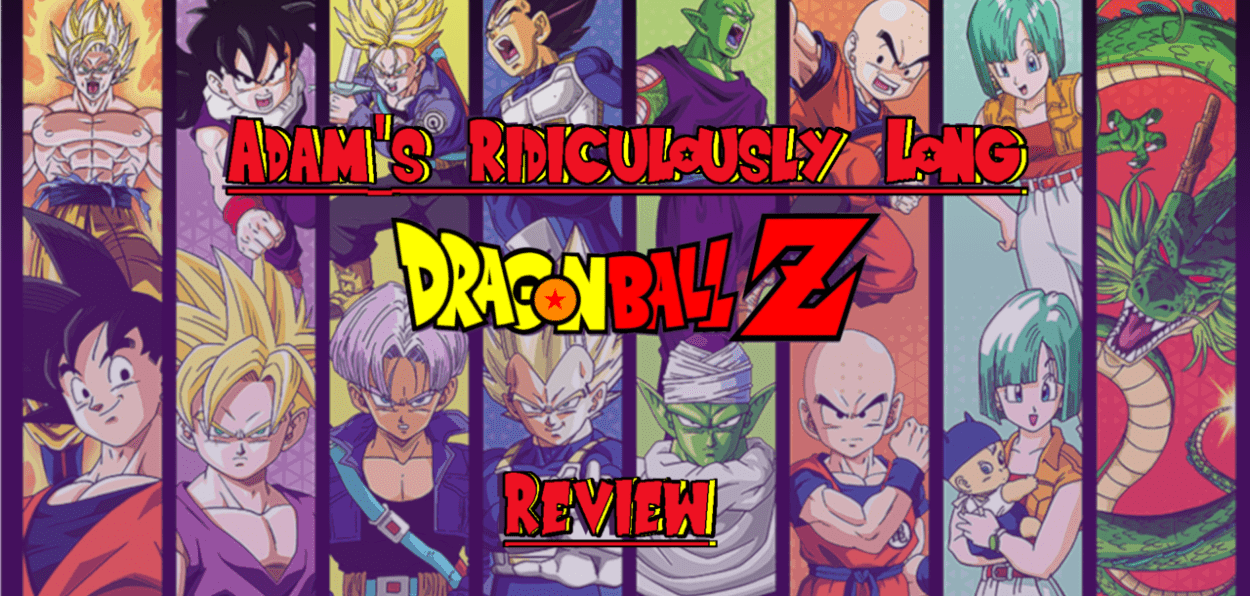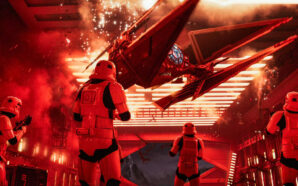My previous article in this series ended where I feel Season Eight should have, with Vegeta’s sacrifice, his final atonement. In this article I’m going to wrap up Season Eight and really dissect the reasons why this saga runs into so many problems compared to the others that preceded it. By comparing Majin Buu to Frieza and Cell we’ll get a really good look at why those sagas work so well and why Buu’s is the weakest of the big three.
I previously explained the problems in Season Seven, the first season in the post-Cell arc, that arose from the intended focus shift, from Goku to Gohan, not working out and the resulting course correction. To recap, what that means is that much of the season is wasted with regards to its impact on the narrative moving forward into the final two seasons. This compares really unfavourably to Season One and Season Four, both of which did much better jobs of setting the stage for the events in the following two seasons; as well as being entertaining in their own right. It isn’t until Season Seven sets up the tournament arc, Goku’s 24 hour return to the living world and the promise of a rematch between him and Vegeta that we have meaningful inclusions that are important moving forward. The fight between Goku and Vegeta is supposed to be one of the first matches of the tournament, the anticipation of that fight is shared by the characters, especially Vegeta, as well as the audience. Coupled with Goku’s strict time limit for being in the living world, the distraction created by Babidi and his minions creates a perfect storm that sets the conditions for Vegeta’s frustration to boil over and have him decide to “go evil” to get what he wants more than anything else. A chance to prove, once and for all, that he is better than Kakarot.
Majin Buu is an interesting villain with no longevity because he lacks a compelling motivation to be villainous. What makes him interesting is his demeanour, unlike Frieza or Cell he isn’t serious or calculated in his approach to things. Majin Buu is very childlike, seeking novelty to satisfy his curiosity while being prone to throwing tantrums or playing pranks instead of taking the fights seriously. This shines through in his techniques and makes him incredibly unpredictable and downright terrifying in a way that’s quite distinct from the likes of Frieza. It just so happens Majin Buu is one of the most powerful beings in the Universe so it doesn’t really matter whether he takes fights seriously or not, much to the annoyance of anyone with an ounce of pride; or the mountain full that Vegeta carries with him.
While it is interesting it isn’t the typical characterisation of a villain so the wizard Babidi is given the puppet strings and tasked with the role of directing Majin Buu to commit the evil deeds that ensures he qualifies for his Bad Guy Inc. membership card. There’s a problem here too though, Babidi’s motivation is to destroy the Universe – using Buu – because that is what his father was doing; before he was killed/stopped by the Supreme Kai. As motivations go it is extremely underwhelming and wafer thin. There’s nothing compelling about it either. The revenge against the Supreme Kai angle certainly has some weight to it but it’s not enough on its own to carry events forward and is given surprisingly little real attention. Particularly because it is never a focus. Compare that to Frieza’s goal to rule the Universe and to use the Namekian Dragon Balls to wish for immortality. Frieza sets about gathering them by any means necessary – genocide in that case. Or Cell, he was created to desire achieving his perfect form and then seeks to test his power – by defeating his creator’s tormentor-in-chief, Goku – once he has obtained it. They have clear goals that are fitting with their characterisation and serve to guide the story forward. As villains they set the terms of success and failure for our heroes and how they respond to the challenge they face is what drives the story along. Majin Buu isn’t able to set the terms in this way because he’s directed by another. Babidi then isn’t able to set the terms for the story moving forward because there’s no depth to his desires. Once Majin Buu is released he has no real plan for what happens next and doesn’t start formulating one outwith the petty considerations of the moment. It’s clear that Frieza’s Namekian trip is just one step in a larger, ongoing story that he is at the centre of but we don’t see. While we watch Cell make his initial plans become a reality and then start to formulate what his future looks like. Babidi and Buu don’t do either.
I’ve mentioned before that Akira Toriyama is famous/infamous for saying that he didn’t map the stories out in advance. He let’s the characters dictate where the story goes and writes it as he is going along which is brilliant when it works. It works for the Frieza and Cell Sagas because, as the villains, they have clear goals and objectives that guide the narrative forward and instruct what the heroes must do if they are to be stopped. They have depth to their character that informs those goals and makes them interesting presences on screen. Babidi has no depth whatsoever and Majin Buu has some but not a lot and what’s there isn’t very well explored. It works for Vegeta as his character develops through the series and culminates in his fight with Majin Buu. However, once Vegeta is gone no other character provides a guiding path forward for the narrative. there’s no clear and obvious thing that should happen next. This is what leads to the meanderings and missteps that result in Season Nine – which we’ll get to in detail next time. Much like the first half of Season Seven, there’s a lot of stuff that goes on that doesn’t impact the narrative. Things that don’t move the story on but instead serve only to slow it down despite how cool they are as ideas in themselves – But let’s not get ahead of ourselves too much.
Season Eight’s final set of episodes, the ones after Vegeta’s final atonement, rather undercut some of the brilliant stuff that I waxed lyrical about in my previous article. I know I said that Season Eight was sublime at the start of said article, and it was, up til that point. For a start, Majin Buu isn’t dead. Blown to smithereens? Yes. Dead? Unfortunately not, as those smithereens coalesce back into Majin Buu as if nothing had happened and Vegeta had never existed. That angers me, for obvious reasons, but it does succeed in getting me invested in seeing Majin Buu being taken out as much as I dislike that Vegeta’s sacrifice was in vain it does one important thing right, motivates me to see that big pink blob bite it for real. Enter, Goku. Goku gets to throw not one, but two new techniques into the canon of the show to help beat back Buu in these final episodes of Season Eight. The Fusion Dance he teaches to Goten & Trunks offering them a quick and easy way to temporarily power-up significantly by joining themselves together. It only lasts for 30 minutes at a time but the multiplication effect is really quite something… if you can complete the dance in perfect synchronicity with your partner. The other thing is something I feel quite conflicted about, it’s Super Saiyan 3. It’s reveal is an incredible moment with a beautifully animated sequence and an absolutely throat shredding scream from Sean Schemmel that is one of the most impressive in the entire series. – A big call in a series that is chock full of incredible screaming. My issues with it are two fold.
Firstly, I’ve never been that keen on the design, the long hair and eyebrowless face just isn’t as easy on the eye as most of the other transformations. Secondly, and most importantly, it makes a bit of a mockery of that incredible fight between Goku & Vegeta earlier in the season. Their fight was presented as being absolutely even between them, a real fight where the victory could go either way at any time. Where Vegeta appeared to have the upper hand on several occasions. It meant so much to Vegeta and to know that Goku had this ace up his sleeve the entire time serves only to undermine what it meant. There’s plenty of excuses about how it is an incredibly taxing technique that Goku can’t sustain and about how it uses up his time back on earth faster, shortening his 24 hour stay significantly. It’s all nonsense and worst of all, Goku doesn’t even use it to defeat Majin Buu despite clearly being capable of doing so. He uses it entirely as a distraction to keep Majin Buu busy while Trunks goes on an errand to Capsule Corp. I guess that’s three problems but one good thing does come of it narratively. Goku prompts Buu to consider whether having Babidi pulling his strings is really what he wants. So, that is something at least.
Majin Buu takes an unexpected turn as a character after he disposes of Babidi, freeing himself from his incredibly unimaginative puppet master. A relationship between Buu and Mr Satan develops that looks to set Majin Buu on the path to becoming a reformed former villain who lives out his days peacefully. That’s right, the bumbling, incompetent, showman lacking in any sort of substance that is Mr Satan actually proves useful for a change.
Will this peace on earth last? What will they fill Season Nine with if it does!? Find out in my next exciting article about Dragon Ball Z. And don’t forget that you can purchase the beautifully remastered Blu-Ray’s as individual seasons from Manga UK.








